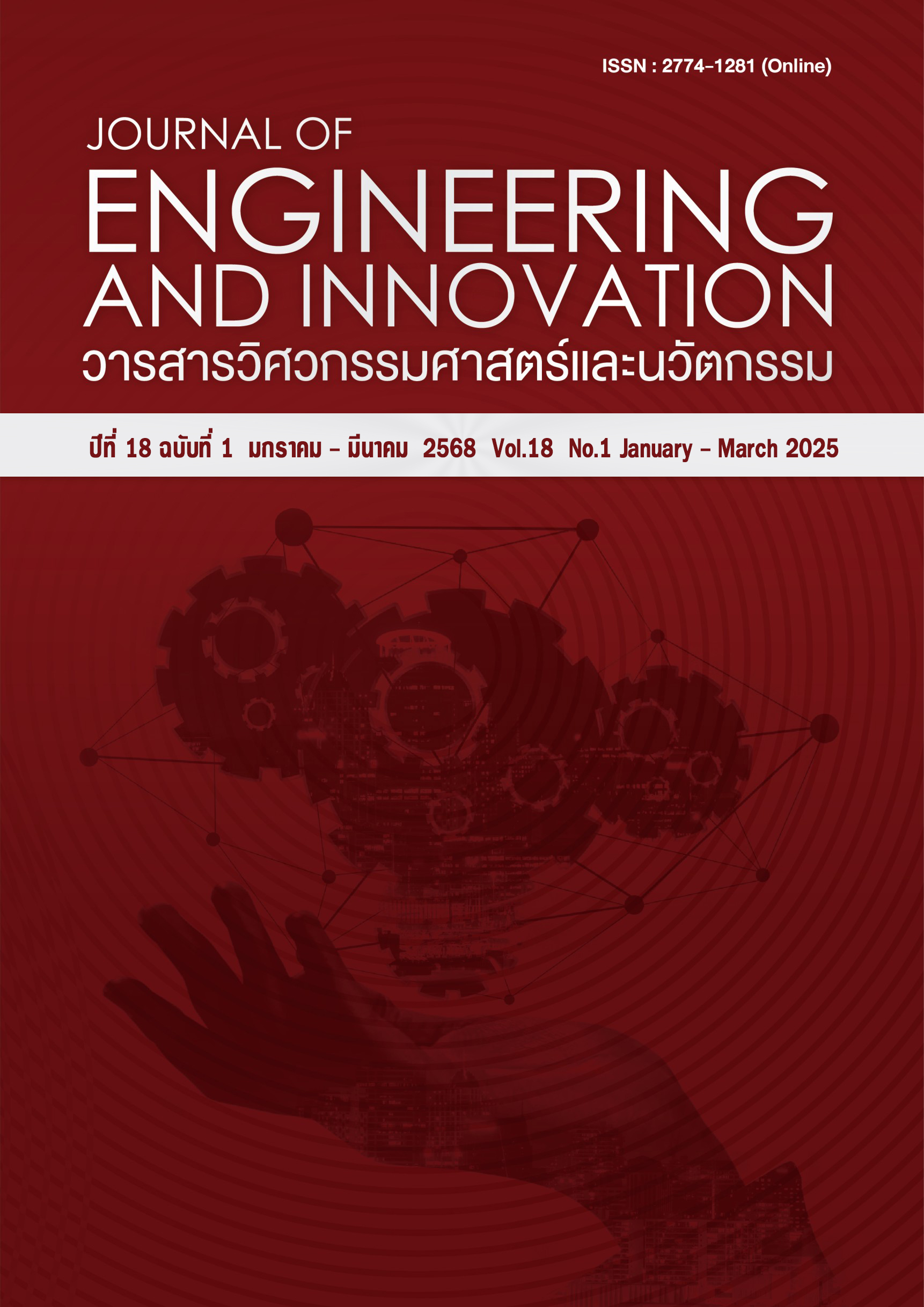Improvement of the mold supporting tray in food skewer processing using finite element analysis
Main Article Content
Abstract
Food skewers are an important export product from Thailand. A supplier can receive orders as high as three hundred thousand sticks per month. Skewer machines play a crucial role in fulfilling these orders. Data from the past three months shows that the most frequent production interruption is due to the mold part being pulled away from the mold supporting tray. As a result, the production line must be stopped to reposition the mold. The root cause of the problem was identified as the excessive deflection of the mold supporting tray under compressive force. In this work, Finite Element Analysis (FEA) was used to study the deflection of the mold supporting tray. The objective was to improve the tray to reduce its deflection. Three new designs were created by modifying the current tray. A compressive force of 630 Newton was applied to the mold to produce a compression load on the mold supporting tray. The deflection was then predicted using FEA. The deflection predicted is 16.48% less than experimental results. The deflection of the current tray was predicted to be 0.2777 mm, while the best alternative design had a deflection of 0.2450 mm. As the new design can decrease the deflection by 11.78%, it was then fabricated for experimental validation.For tray stiffness, the FEA result is 20.51% higher than experimental results. Despite these differences, the experiment agrees well with the FEA that the new tray design can reduce deflection and, consequently, reduce the mold’s pull-away problem.
Article Details
References
ธิติวัฒน์ มัตตะธนันต์ชัย. การออกแบบตัวถังคอมโพสิตไร้โครงแบบผสมสำหรับรถแข่งฟอร์มูล่านักเรียน [วิทยานิพนธ์]. วิศวกรรมศาสตรมหาบัณฑิต (วิศวกรรมเครื่องกล). ก รุ ง เ ท พ ม ห า น ค ร : บั ณ ฑิ ต วิ ท ย า ลั ย , มหาวิทยาลัยเกษตรศาสตร์; 2565.
Engineering ToolBox. Angular motion - power and torque. Available form: https://www.engi
neeringtoolbox.com/angular-velocity-accele
ration-power-torque-d_1397.html [Accessed 12th September 2024].
Simulation so easy. Result of Simulation. Available form: https://thai-solidworks-simulation.blogspot.com/2016/03/simulation-part-25.html [Accessed 12th September 2024].
Mechead. Ansys contact types and explanations. Available form: https://www.mec
head.com/contact-types-and-behaviours-in-ansys/. [Accessed 12th September 2024].
Mechead. Mesh methods and element types in ansys workbench. Available form:
https://www.mechead.com/mesh-methods-and-element-types-in-ansys-workbench/ [Accessed 12th September 2024].
Ansys innovation courses. Basics of contact. Available form: https://courses.ansys.com/
index.php/courses/connecting-partstogether/
lessons/understanding-basics-of-contact-lesson-2/ [Accessed 12th September 2024].
Ansys® Release 2022 R2, Granta Materials Data for Simulation, ANSYS, Inc.
MatWeb. Material property data. Available form: https://www.matweb.com/index.aspx. [Accessed 12th September 2024].
Tribonet. Friction coefficient tables in air and vacuum. Available form: https://www.tribonet
.org/wiki/friction-coefficients-in-atmosphere-and-vacuum/ [Accessed 12th September 2024].
